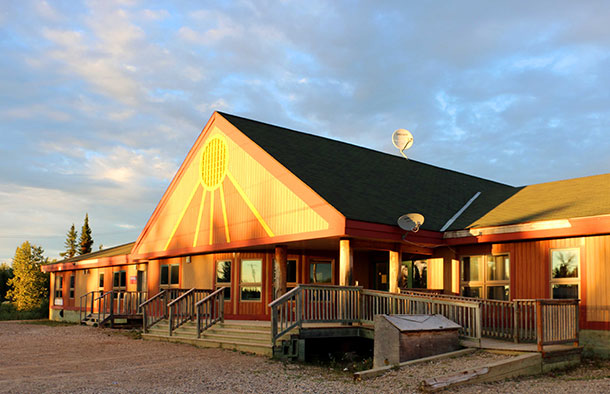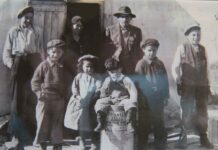
Weenusk First Nation – With elections for chief and council in Peawanuck, Ont. right around the corner and the nomination meeting just days away its important that Weenusk First Nation members know their voting rights, particularly those members living outside the community. You still have a say in who will be your future leaders, even if you are living off reserve. One day you or your children may decide to come back to home and the decisions of the leaders being elected will affect the home you return to. Every band member is counted when it comes to funding so every band member should be voting.
For those members who do not reside on reserve, it is important that you send in your updated mailing address to the band office as soon as possible. You must also request a mail-in ballot if you are not in Peawanuck or able to make it to another voting station on election day. Any updates to your personal information can be provided to the Band Office, or to the electoral officer Marlene Chookomoolin, or deputy electoral officer Virginia Hunter. To reach the Band Office or to leave a message for the electoral officers, call 705-473-2554 or 2550.
As of Aug. 17, an official election date has yet to be announced, but the date will be made official following nominations, which begin Aug. 18. Ensure you are prepared to vote for whomever you choose when the time comes.
Below is information on nominating and voting by mail for members/electors who do not reside on Weenusk First Nation.
Weenusk First Nation – Leadership Selection Code Part 4 Section D
1. At least thirty days before the day on which an election is to be held, the band shall provide the electoral officer with a list of the names of all the electors.
2. The registrar shall, no later than 30 days before the date on which the election is to be held, provide the electoral officer with the last known addresses, if any, of all electors who do not reside on the reserve.
3. Electors are responsible for providing the band with their current addresses.
4. An elector’s address shall be used by the electoral officer only for the purpose of providing notices, mail-in ballots or other election documents to electors who are entitle to receive them under this code.
5. Except for the purposes noted above the electoral officer shall not disclose an elector’s address without the consent of the elector.
6. A candidate for election as chief of councillor may obtain from the electoral officer a list of the names and addresses of the electors in alphabetical order.
7. At least thirty days before the day on which an election is to be held, the electoral officer shall prepare a voters list containing the names of all the electors in alphabetical order.
8. A voter list shall set out the band membership or registry number of each elector or, if the elector does not have a band membership or registry number, the date of birth of the elector.
9. On request, the electoral officer or deputy electoral officer shall confirm whether the name of a person is on the voters list.
10. The electoral officer shall revise the voters list where it is demonstrated that: a) the name of an elector has been omitted from the list; b) the name of an elector is incorrectly set out in the list; c) the name of a person not qualified to vote is included in the list.
Weenusk First Nation – Leadership Selection Code Part 5 – THE NOMINATION PROCESS
F. Notice of Nomination Meeting and Mail-In Procedures
1. The electoral officer shall, at least 30 days before the date on which the nomination meeting is to be held, post a notice of nomination meeting in at least one conspicuous place on the reserve and mail a notice of the nomination meeting and a voter declaration form to every elector who does not reside on the reserve.
2. A notice of a nomination meeting shall include:
a) The date, time, duration and location of nomination meeting;
b) The date on which the election will be held and the location of each polling place;
c) The name and phone number of the electoral officer,
d) The statement that any voter may vote by mail-in ballot
e) A description of the manner in which an elector can nominate a candidate, or second the nomination of a candidate; and
f) The statement that, if the elector wants to receive information from candidates, the elector can agree to have his or her address released to the candidates.
3. The electoral officer shall record the names of the electors to whom a notice of the nomination meeting was mailed, the addresses of those electors, and the date on which the notices were mailed.
The above is information for Nomination Procedures according to the “Weenusk First Nation – Leadership Selection Code”. After the nominations have been in place the electoral officer will post three days later the election notice which will include:
a) the date of the election;
b) the times at which the polling station(s) will open and close;
c) the location of the polling station(s);
d) the time and location of the counting of the votes; and
e) A statement that the voters list is posted for public viewing and its location.
When the nomination process is complete the Electoral Officer will mail off reserve electors, and/or those that have requested to vote by mail-in-ballot at least 30 days prior to election day, the package will consist of:
a) A ballot initialed on the back by the electoral officer;
b) An outer, postage paid return envelope, pre-addressed to the electoral officer;
c) A second inner envelope marked “ballot” for insertion of the completed ballot;
d) A voter declaration form;
e) A letter of instruction regarding voting by mail-in ballot;
f) A statement
i. Identifying the location of all polling places; and
ii. Advising the elector that he or she may vote in person at any polling station on the day of the election if the return their mail-in ballot to the electoral officer at the polling station or swear a written declaration before the electoral officer, a justice of the peace, notary public or duly appointed commissioner for taking oaths that they have lost the mail-in ballot; and
iii. A list of the names of any candidates who were acclaimed.
By Dawn Wabano






